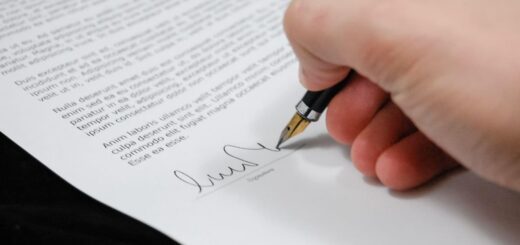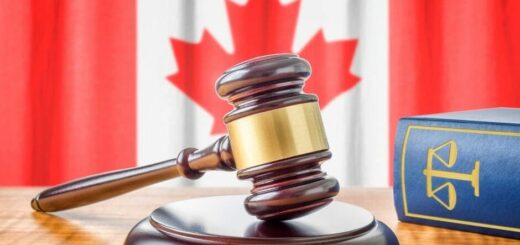Understanding Canada’s Weapons Laws and Regulations
In the landscape of Canadian firearms and accessories, items like the Vortex Venom Red Dot stand out for their precision and reliability, reflecting the importance of understanding the comprehensive laws and regulations governing weapons in Canada. As Canadian citizens, it is crucial to navigate the legalities surrounding the ownership, use, and transportation of various weapons, including sophisticated firearm optics available in Canada. This article aims to demystify the complexities of Canadian weapon regulations, providing a clear guide to lawful compliance.
Introduction
The legal framework of Canada takes a nuanced approach to weapons, balancing individual rights with public safety. Defining what constitutes a ‘weapon’ can be complex, with the law considering not only firearms but also a variety of other potentially harmful devices.
1. Historical Context of Canadian Weapons Regulations
The Roots of Regulation
Canadian weapons regulations have a storied past, shaped by a desire to maintain peace and order while respecting the rights of individuals. It’s essential to understand these historical underpinnings to grasp the intent and rationale behind current laws.
Influential Events
Several key events have catalyzed changes in legislation, reflecting society’s evolving views on weapon ownership and safety. These historical markers serve as waypoints in the journey toward today’s legal landscape.
2. Classification of Weapons in Canada
Defining Weapon Categories
Canada’s legal system categorizes weapons into distinct groups, each with its own set of regulations. Understanding these categories is the first step in complying with the law.
Criteria for Weapon Classification
The classification of a weapon in Canada is determined by specific criteria set out by legislation. This includes the weapon’s design, intended use, and potential for harm.
ALSO READ: What Do You Need To Know About Laws Regulations in the United States?
3. Firearm Ownership Regulations
Obtaining a Firearms License
Eligibility for firearm ownership in Canada is not a given right but a privilege that comes with responsibilities and strict criteria that must be met by applicants.
Safe Handling and Storage
Once a firearms license is obtained, owners must adhere to stringent safe storage and transportation guidelines to ensure the safety of both the public and the weapon owner.
4. Restricted and Prohibited Weapons
Restricted and Prohibited List
Certain weapons are deemed too dangerous for general ownership and are thus restricted or prohibited. This section will delineate which weapons fall under these categories.
Legal Repercussions
Possession of restricted or prohibited weapons without proper authorization carries severe legal penalties. Understanding these repercussions is vital to lawful weapon management.
5. Import and Export Laws
Cross-Border Weapon Regulations
The movement of weapons across Canadian borders is tightly controlled. This section will explore the necessary steps and documentation for legally importing and exporting weapons.
6. Use of Weapons for Self-Defense
Self-Defense Laws
Canadian law has specific provisions regarding the use of weapons for self-defense. This section will clarify these laws and the limitations placed on weapon use in self-defense scenarios.
7. Recent Changes and Updates in Legislation
Keeping Up-to-Date
Weapon laws are not static; they evolve. Recent legislative updates will be examined to keep readers informed of the current legal framework.
Legislative Debates
Ongoing discussions and debates surrounding weapon legislation indicate the dynamic nature of this area of law. Key debates and proposals will be discussed here.
8. Impact of Regulations on Crime Rates
Weapon Laws and Crime Statistics
Do stricter weapon laws correlate with lower crime rates? This section will analyze data and research to address this question.
Expert Analyses
Insights from law enforcement and criminologists will provide depth to the discussion on the impact of weapon regulations on crime rates.
9. Comparison with Other Countries
In the global arena, Canada’s approach to weapon laws is often viewed as a middle ground, balancing individual rights with societal protection. By placing its policies under the microscope alongside those of other nations, we can gain a clearer understanding of the global spectrum of weapon legislation and the various factors that influence it.
International Perspectives
The United States
Directly south of the border, the United States presents a stark contrast with its Second Amendment rights, which have led to relatively lenient gun ownership laws. This constitutional right has deeply influenced American society’s views on firearms, leading to a high rate of gun ownership and a significant impact on crime and public incidents.
The United Kingdom
Across the Atlantic, the United Kingdom takes a more restrictive stance on gun ownership. Following the Dunblane school massacre in 1996, the UK enacted stringent gun control measures, essentially banning handguns and making the process of owning sporting rifles and shotguns highly regulated.
Australia
Similarly, Australia’s response to the Port Arthur massacre in 1996 resulted in the National Firearms Agreement, which severely restricted private gun ownership and implemented a massive gun buyback program. These measures are often credited with significantly reducing gun violence in the country.
Japan
Japan is another example where cultural and societal values, along with strict laws, have led to very low levels of gun ownership and gun-related crimes. Here, civilian gun ownership is highly restricted, and the process to own a weapon involves rigorous checks and training.
Cultural and Social Influences
The cultural fabric of a nation plays an indelible role in shaping its weapon laws. In Canada, the historical context of being a former British colony, along with its proximity to the United States, has contributed to a unique blend of values and attitudes towards weapons.
Canada’s Mosaic of Values
Canadian society is often characterized by its commitment to peace, order, and good governance, which is reflected in its comprehensive but balanced weapon laws. The collective memory of tragedies like the École Polytechnique massacre in 1989 has also influenced public opinion and, consequently, legislation.
The Role of Hunting and Wilderness
The role of hunting and the vast wilderness of Canada also affect its gun culture and laws. For many Canadians, firearms are seen as tools for wildlife management and sustenance hunting, which has fostered a practical and respectful approach to gun ownership.
International Influence and Commitments
Furthermore, Canada’s participation in international treaties and organizations influences its weapon laws. Commitments to global non-proliferation efforts and peacekeeping responsibilities have led Canada to adopt policies that often mirror international standards.
In conclusion, the comparison of weapon laws among different countries reveals that no single approach is universally applicable. Each nation’s laws are deeply embedded within its own historical, cultural, and social contexts. Canada’s weapon legislation, while unique, shares common goals with many other countries – to ensure the safety of its citizens while respecting individual freedoms.
10. Resources and Support for Weapon Owners
Educational Opportunities
Information on educational programs designed to promote safe weapon use will be provided, emphasizing the importance of continued learning for weapon owners.
Legal Support Systems
Support systems for lawful weapon owners facing legal issues will be highlighted, offering guidance on navigating potential legal challenges.
Conclusion
The conclusion will summarize the critical points of the article, emphasizing the importance of understanding and complying with weapon laws for the safety and well-being of all Canadians.


















Recent Comments